|
If you're of the opinion that Eastern European cinema sometimes frustrates by refusing to tell a clear and coherent story (you're not, are you?), then the opening ten minutes or so of Ildikó Enyedi's enigmatically titled 1989 debut feature, My 20th Century [Az én XX. Századom], will likely have you pointing at the screen and shouting "there you go!" But what some may find confusing, I found intriguing. What, I wondered, could the connection possibly be between the flamboyant launch of a glum-looking Thomas Edison's latest invention – the incandescent light bulb – and the birth of identical twin girls in Budapest, apart from the fact that both events occur simultaneously. And it's worth noting that we're steered from the first location to the next by excitable voices emanating from skittish lights in the sky that may or may not be a band of playful angels. We then hop forward a few years, by when the girls' mother has passed away, leaving her young daughters Lili and Dóra to fend for themselves, which we find them doing by selling matches beneath a snow-blown monument on Christmas Eve in a sequence that looks as though it was shot in the 40s for a Dickens movie made by David Lean. The girls fall asleep and are approached by two wealthy-looking gentlemen, who help themselves to a match and, after tossing a coin, pick one girl up each and go their separate ways.
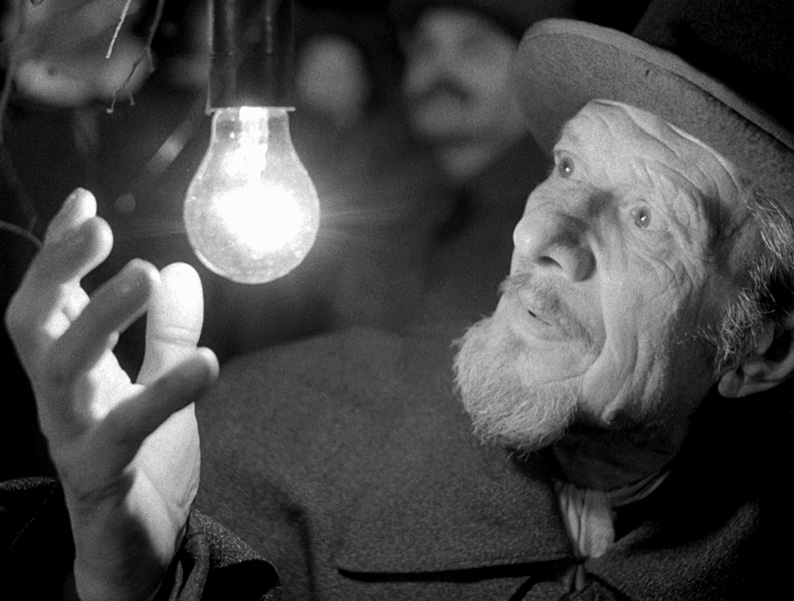
This feels like the kicking off point for the narrative proper, but no sooner have we found our feet than we're transported to the Sorbonne in Paris, where Nikola Tesla is conducting an experiment involving electrical conduction to an audience of exclusively male stiffs, one of whom is a man we will later come to know as Z (Oleg Yankovskiy). Then we're off to the jungles of Burma, where Z is on a mission to collect bamboo for Edison and prattling on about the wonders of the electric light to a native bearer who probably can't understand a word he is saying. Seconds later we're on a Hamburg river, where Z is still talking about Edison, this time to a man who thinks that Hungary, Austria, Bohemia, Romania and Serbia are all pretend countries invented by Shakespeare. Then we're back in New York for an Edison light show involving a dancer whose costume has been kitted out with light bulbs, which are positioned in a similar manner to those white blobs you decorate performers with in order to motion capture motion for video games. Want to guess who's there? Yep, Z again. What, exactly is his role in this story? We'll have to wait and see, as the moment that the dance concludes we're transported to the Orient Express on New Year's Eve in 1900 and find ourselves in the company (and sharing the thoughts) of the now adult and strikingly alluring Dóra (Dorotha Segda), who appears to be making a comfortable living enchanting wealthy would-be suitors and then cheerfully fleecing them any way she can. Clearly having followed a very different path, Lili (also played by Dorotha Segda) has become a revolutionary and is being sent to Budapest to assassinate the minister of the interior. Coincidentally, she boards the very same train on which her sister is travelling – Dóra even catches sight of her, but is distracted by her male companions and the pop of a champagne cork before she can register just who she is looking at.
While Dóra drinks and flirts in first class, her sister squeezes into an offered seat back in third, where a young man under police suspicion hides a paperback titled Mutual Aid: A Factor of Evolution in the birdcage in which Lili is transporting two carrier pigeons. When Lili alights, the book falls from the cage, and a short while later is chanced upon by Z, who from this point on becomes the unknowing link between the two sisters. He first spots Lili at a library and pursues her when she leaves, then is present at a motion picture gallery when Lili's first bomb explodes and fails to kill its intended target. Later he helps her climb a wall into a factory, where she scales a tower and tosses revolutionary leaflets down to workers as they arrive for the morning shift. Later still, Z is on board a liner in the short-lived Free State of Fiume, when he catches the attention of Dóra, whom his mistakes for Lili and who joins him in his cabin, where she steals from his wallet and sleeps with him before heading on her merry way. Back in Budapest, Z chance encounters Lili on the street and they head back to his place for sex, a compensatory move on Lili's part for refusing him earlier that he misinterprets as an apologetic response to the Fiume encounter with the twin sister he still believes was her.
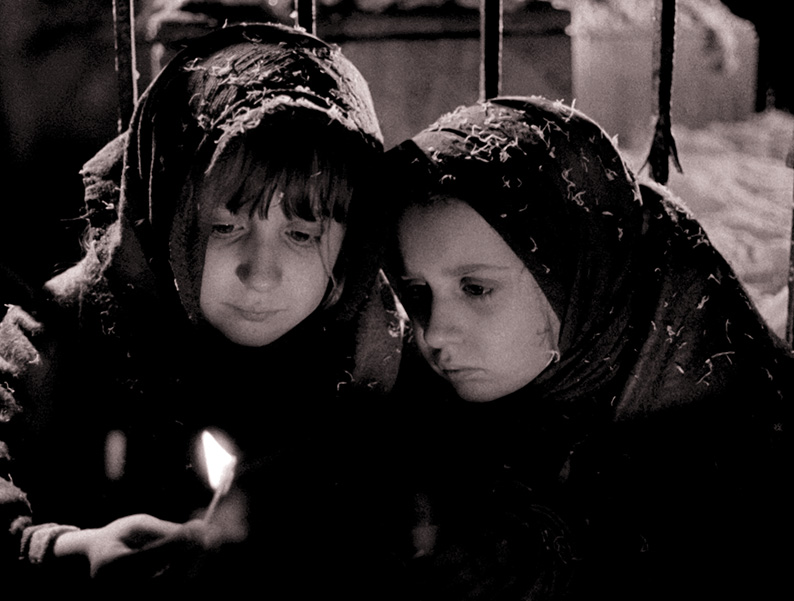
This dual-story setup is used by director Enyedi as a framework on which to riff and experiment with form and content, lacing her drama with comic moments, surrealistic asides and unexpected changes of viewpoint, style and pace. The dizzying nature of the opening location hops, for example, is slowed to an observational crawl when Z finds the dropped book and takes it home, where we watch him come in, feed wood into his stove, take off his coat, light a cigar, check who is banging on a door outside, then get comfortable in a chair and start reading the book, all in leisurely real time. Later, when he helps Lili over the factory wall, we stay on a static wide shot of him while converses with Lili's disembodied voice, continuing the conversation even after she has left the scene. Moments later, we join Lili inside the factory grounds for a sequence whose pounding of industrial machinery and backlit steam could almost have been lifted from early David Lynch.
The celestial angels, meanwhile, appear intermittently enough to feel less like a Heavenly Greek chorus than playful imps, seemingly teasing the consistently glum Edison and coming to Lili's aid when she finds herself alone in a spookily cloud-like Siberian snowscape. At one point, they even amuse themselves by screening randomly juxtaposed film clips to a disinterested dog that has been caged and wired up for animal experiments (and whom we briefly saw being taken from its mother earlier in a subtle reference to Dóra and Lili's abduction). When the sequence concludes with two shots of an army of cats running wild, the dog suddenly takes interest, then flees into the fields, brings a train to a halt and heads off into the ocean, which it appears to swim off to a distant shore. What does all this mean? I'm not sure I know, but the sequence itself amused and entertained the hell out of me, for reasons I've not quite been quite able to pin down. A similarly engaging surrealistic aside occurs when Z and Lily are visiting a zoo and a caged monkey decides to telepathically tell them the story of his capture, which then unfolds in amusing flashback. Other sequences offer more traditional pleasures, as when Dóra makes a cryptic remark to a sanatorium doctor and then visits a jeweller to examine an expensive necklace under the guise of a well-to-do socialite, two seemingly disconnected scenes that are revealed in the one that follows to be connected components of one of Dóra's more inventive cons. I was also left marvelling at the work that must have been required to stage the deceptively simple sequence where the Orient Express pauses its journey to see in the new year, and the camera cuts between a number of expectant faces, all of whom have been carefully cast and entrancingly framed to give the inescapable impression that they each have interesting tales to tell.
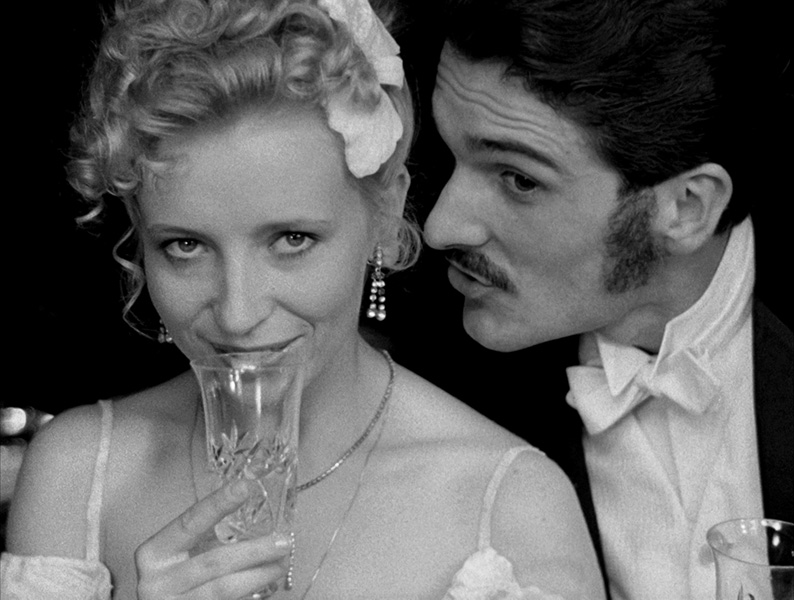
The film draws a number of lifestyle, political and historical parallels that are imprecise enough in nature to be dismissed almost as easily as they can be embraced. Some are laid out in no uncertain terms – the cut from Dóra luxuriating in first class on the Orient Express to Lili looking for space in the overcrowded proletariat carriage is as blunt a statement about class as you'll find this side of Titanic – but none of these are dwelt on and others will likely require a second viewing to appreciate in full or even recognise at all. Science is shown to be advancing at a rate that the rights of women and issues of individuality and even national identity are struggling to keep pace with, though at no point is one shown to be specifically influencing the other. Where science moves irrevocably forwards, however, political convictions appear to run in waves and cycles – Lili's early radical feminism is fired up by an outrageously bigoted lecture on female sexuality and blindness to logic by a man in dire need of a swift kick in the nuts, but later seems to have mellowed though experience, while her willingness to kill for her cause is suddenly neutered by coming face to face with her intended target. And great moments in science are shown to be both transitional and fleeting, as the incandescent lights that have crowds gasping in wonder in the opening scene have by the end become mere background detail in a hall of mirrors, there only to illuminate the altogether more intriguing spectacle that sits below.
The film looks consistently gorgeous, the result of a close collaboration between director Enyedi and cinematographer Tibor Máthé and their decision to shoot in the Academy ratio on older, low sensitivity monochrome stock, and light the film with the sort of arc lamps you'd have had to rely on in the 30s and 40s. It's also a lot more fun than my waffling above might lead you to expect, with the drama regularly punctuated by amusing character moments and comical interjections. Favourites here include: the would-be suitor on the Orient Express who stops suddenly enough for a steward who is following to collide with him and send the tray flying into the suitor's seemingly waiting hand; the young man who volunteers to have electricity transmitted to him by Tesla, only to have all of those around him simultaneously shuffle to a safer distance; and the policeman who cycles obliviously into the aftermath of an abortive bomb attack and, on seeing that people are lying defensively in the road around him, throws down his bike and joins them on the ground. And I really need to give a shout for lead actor Dorotha Segda, who is utterly bewitching as both Dóra and Lili (and briefly, as their mother), and despite their identical facial appearance, her portrayal of each sister is so nuanced that there's never a moment when you're not sure which of the two you are looking at.
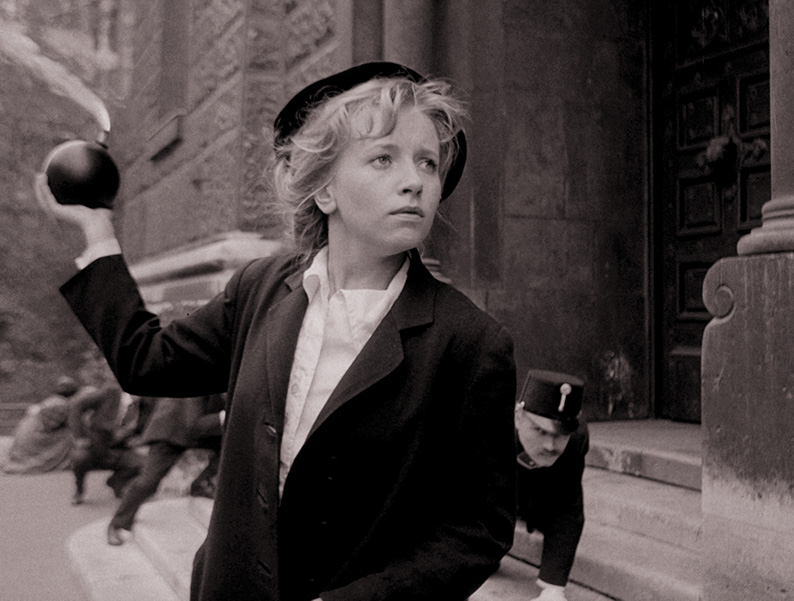
My 20th Century (and I'm not the only one to ponder on the question of exactly who the singular 'my' is referring to) is a captivating, playful and richly textured work that really does benefit from a second viewing, which for me cleared up any hint of confusion caused by the early location hopping and surrealistic asides. The points and connections it makes are sometimes oblique and just occasionally feel a tad too on-the-nose, but it makes them in such a delightfully kaleidoscopic manner that nothing feels heavy-handed and it all has a charmingly take-it-or-leave it air. Viewers who prefer their narratives straightforward, free of ambiguity and neatly concluded are likely to have problems here, but for those who like their films to break with tradition and experiment with form and content in lively, thought-provoking and entertaining ways, My 20th Century should definitely be high on your viewing list.
Sourced from an HD restoration supervised by director Ildikó Enyedi and cinematographer Tibor Máthé, the 1.33:1 1080p transfer on this Blu-ray release is a really rather lovely. The film's vintage aesthetic makes it easy to forget that it was made in 1989, but it's also worth remembering that the striking of pristine digital masters of films on their completion is a far more recent development. The restoration here has been created from the original film materials, and while there are still a number of visible dust spots and a faint trace of flicker that really only shows on large areas of similar tone, the monochrome tonal range is beautifully captured here, with beefy black levels, no burn-outs on whites and a generous range of greys in between. The sharpness and level of detail are both very impressive and fully justify putting the film out on Blu-ray, and there is no sign of damage or distracting DNR. Very nice indeed.
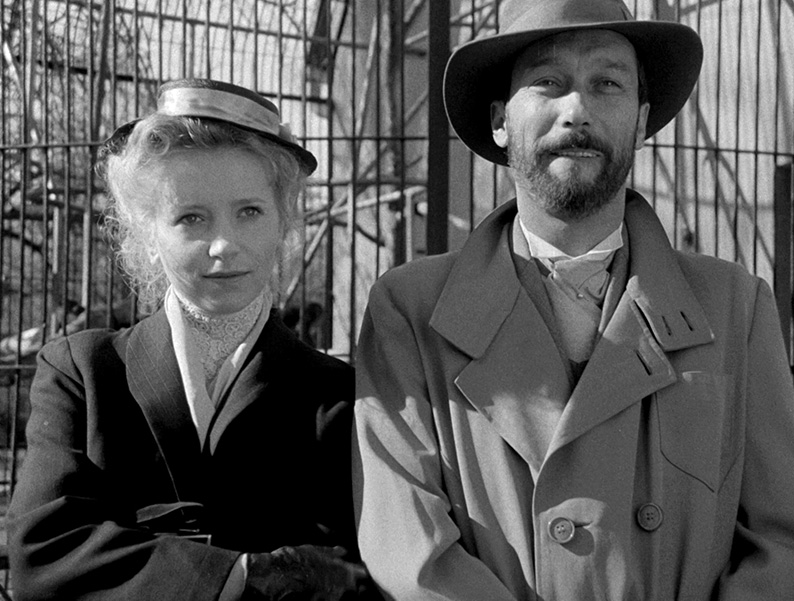
The linear PCM 1.0 mono track is also in fine condition, clearly reproducing the dialogue and sound effects, and doing particularly well by the lovely music score. There's no trace of damage or background hiss, except for the tune that plays when Lili first arrives in Budapest, which has clearly been sourced from an old gramophone record and is likely intended to be read this way.
The optional English subtitles are clear and activated by default.
Interview with Ildikó Enyedi (27:23)
Recorded in Budapest in December 2016 and conducted in English, this interview with director Ildikó Enyedi provides some welcome and interesting background on the film and the prejudicial path she had to follow to become a filmmaker. It now seems a little outrageous that the film school she attended would only allow a maximum of one female student a year and would often take none at all, and while doubtless frustrating at the time, it probably does her image no harm now that her final diploma film ended up being banned. The process of getting My 20th Century up and running is covered in useful detail, as is her partnership with director of photography Tibor Máthé.
Booklet
The meat of this booklet is a wonderfully detailed and analytical essay on the film by author and academic Jonathan Owen, one that puts my tawdry efforts above to shame using many of the same points and a good deal more, though I'd definitely save this for after the first or even second viewing of the film itself. Credits for the film are also included.
I enjoyed My 20th Century a great deal the first time around, but it was on the second viewing that everything really clicked and I really fell for it. Some have complained that plays like an exercise in style over substance, but I'd argue that just because that substance doesn't take the form of a traditional plotline with three acts, a few twists and a solid resolution, that doesn't mean that the substance is not there. As a film experience, it's so much more fun that the description "black and white Hungarian comedy-drama" might lead the more prejudicial viewer to expect, and it looks terrific on Second Run's Blu-ray release. Highly recommended.
|